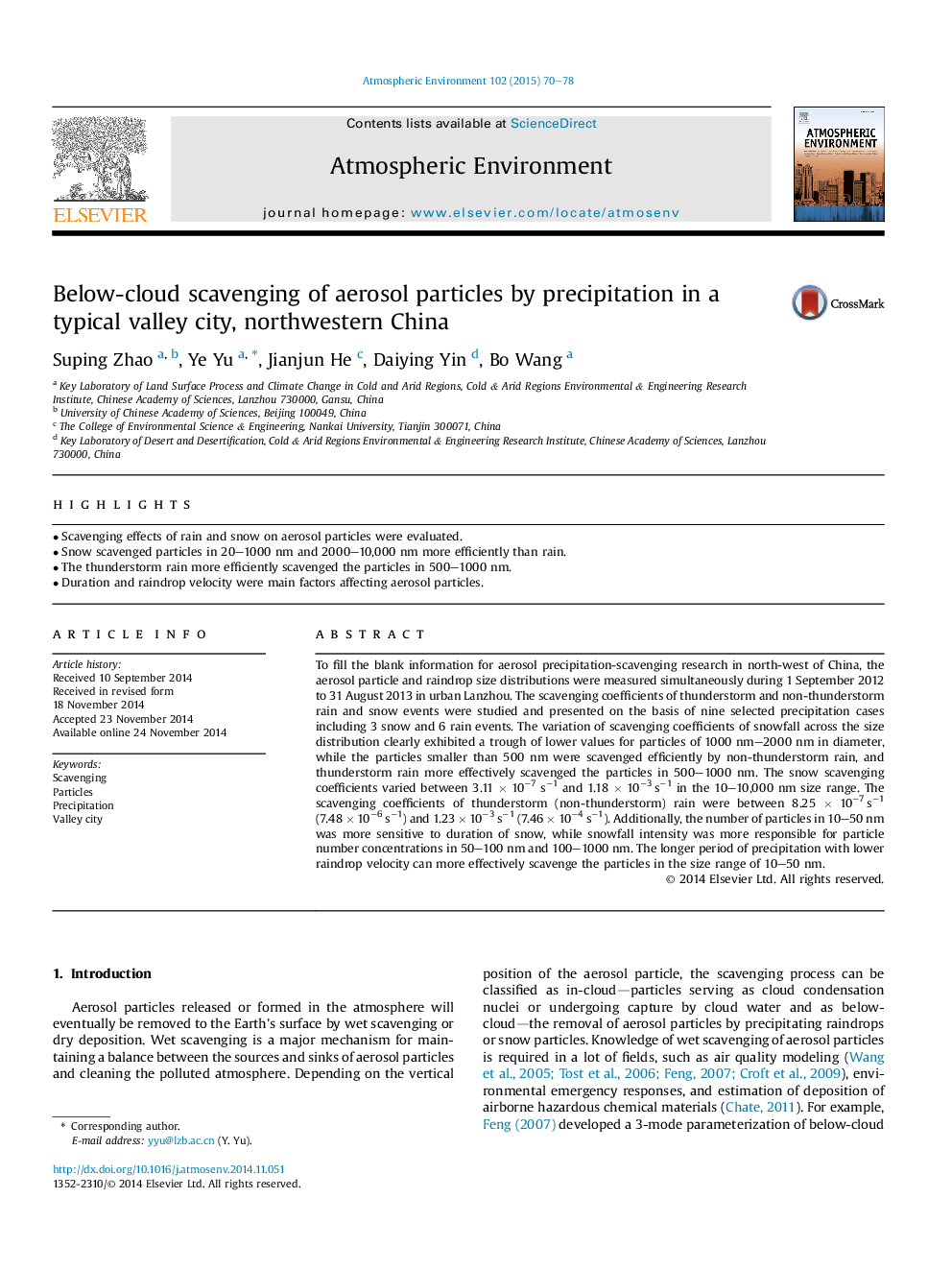| Article ID | Journal | Published Year | Pages | File Type |
|---|---|---|---|---|
| 6338826 | Atmospheric Environment | 2015 | 9 Pages |
Abstract
To fill the blank information for aerosol precipitation-scavenging research in north-west of China, the aerosol particle and raindrop size distributions were measured simultaneously during 1 September 2012 to 31 August 2013 in urban Lanzhou. The scavenging coefficients of thunderstorm and non-thunderstorm rain and snow events were studied and presented on the basis of nine selected precipitation cases including 3 snow and 6 rain events. The variation of scavenging coefficients of snowfall across the size distribution clearly exhibited a trough of lower values for particles of 1000Â nm-2000Â nm in diameter, while the particles smaller than 500Â nm were scavenged efficiently by non-thunderstorm rain, and thunderstorm rain more effectively scavenged the particles in 500-1000Â nm. The snow scavenging coefficients varied between 3.11Â ÃÂ 10â7Â sâ1 and 1.18Â ÃÂ 10â3Â sâ1 in the 10-10,000Â nm size range. The scavenging coefficients of thunderstorm (non-thunderstorm) rain were between 8.25Â ÃÂ 10â7Â sâ1 (7.48Â ÃÂ 10â6Â sâ1) and 1.23Â ÃÂ 10â3Â sâ1 (7.46Â ÃÂ 10â4Â sâ1). Additionally, the number of particles in 10-50Â nm was more sensitive to duration of snow, while snowfall intensity was more responsible for particle number concentrations in 50-100Â nm and 100-1000Â nm. The longer period of precipitation with lower raindrop velocity can more effectively scavenge the particles in the size range of 10-50Â nm.
Keywords
Related Topics
Physical Sciences and Engineering
Earth and Planetary Sciences
Atmospheric Science
Authors
Suping Zhao, Ye Yu, Jianjun He, Daiying Yin, Bo Wang,
